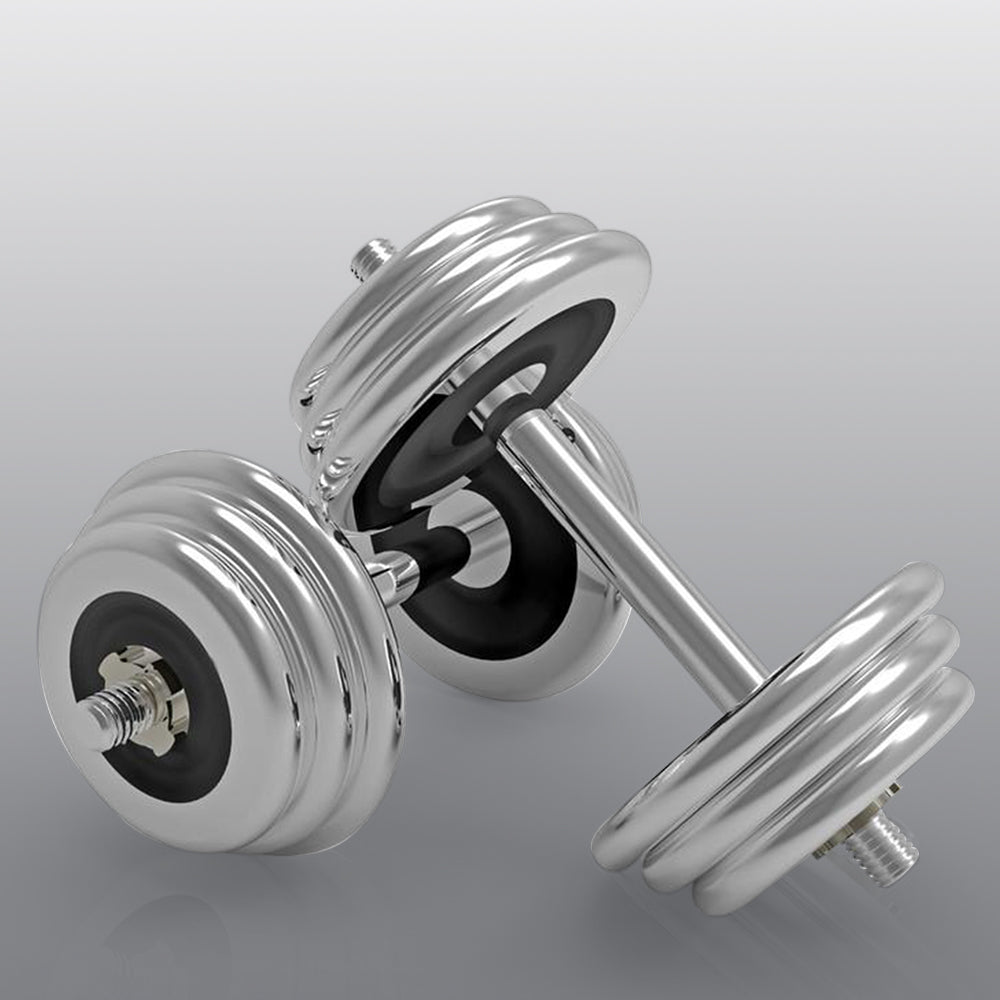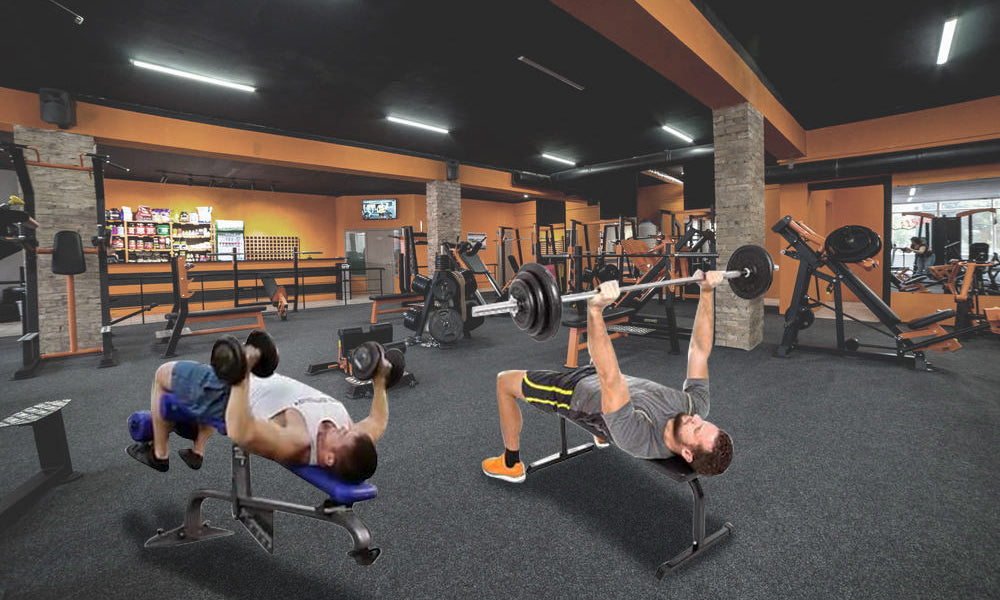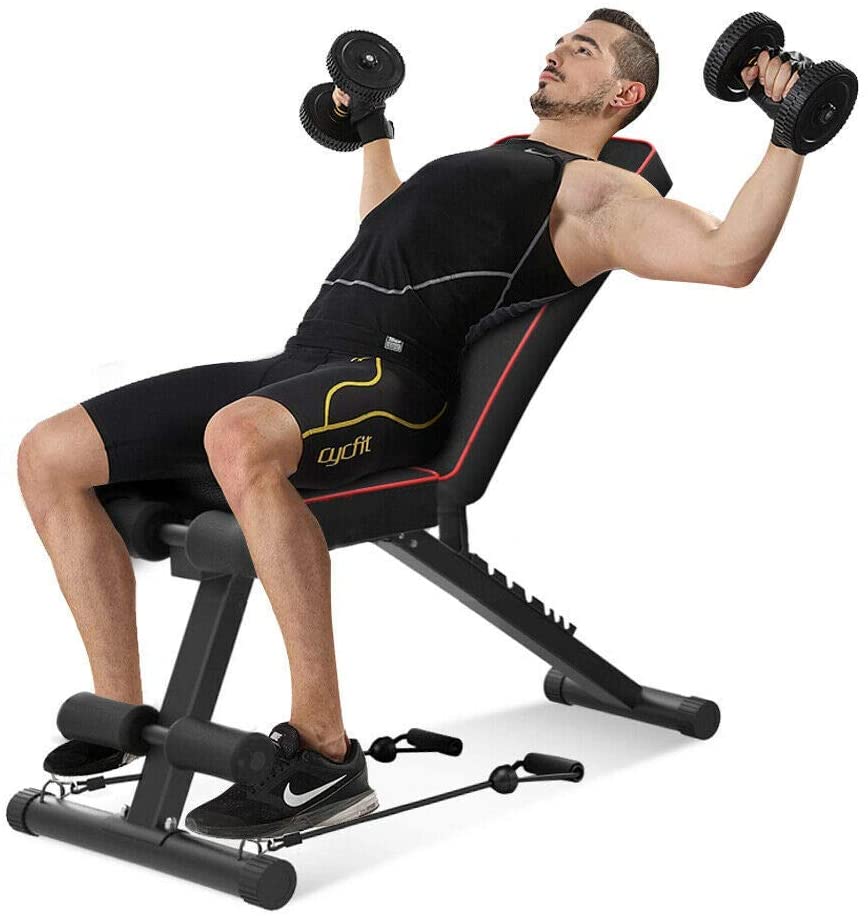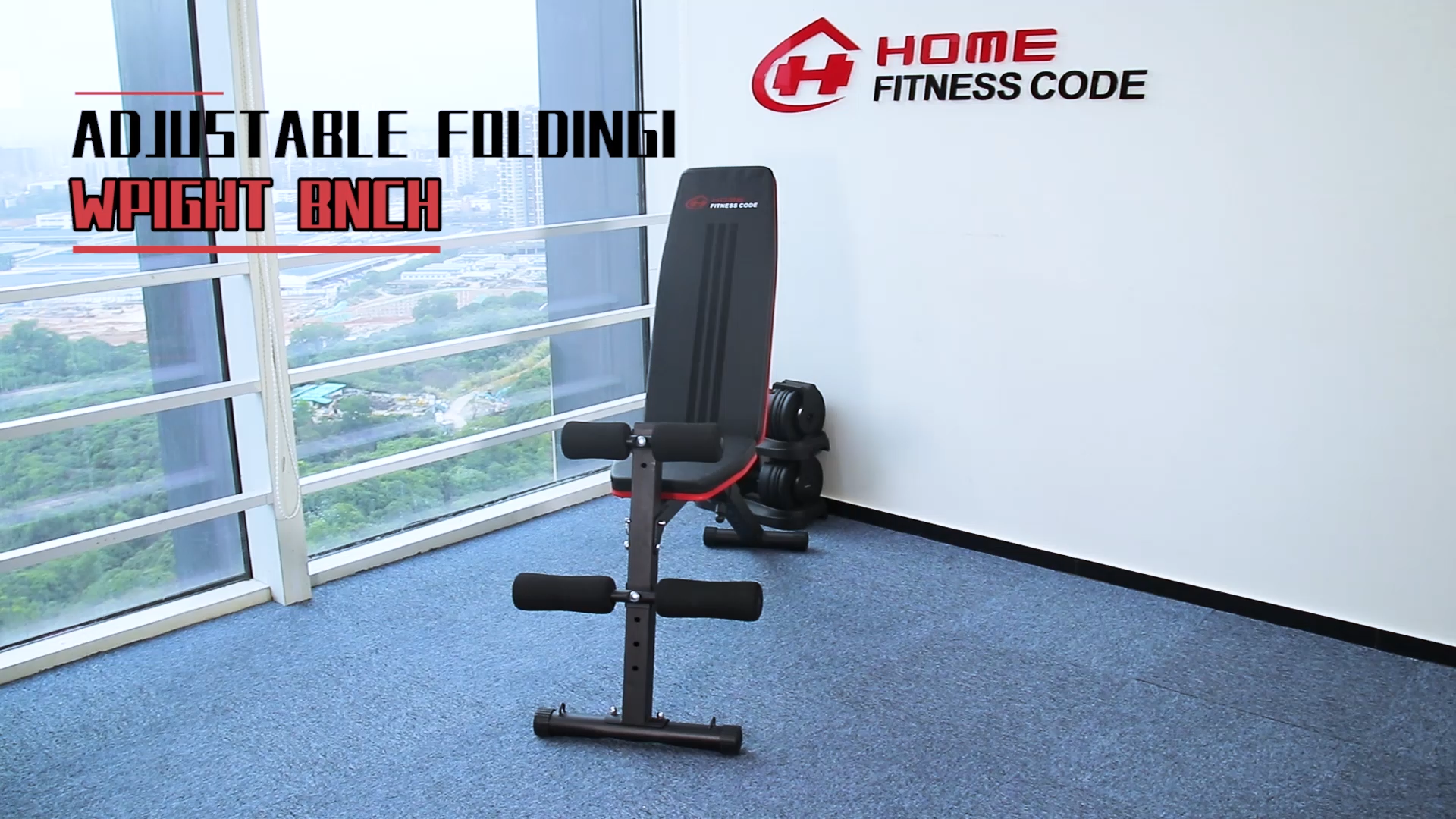One of the so called ‘staple’ movements is the dumbbell chest press. It can be seen in commercial gyms and home gyms all over the world for many of the right reasons, and some of the wrong reasons. I want to share my views and thoughts on what makes this movement something you should definitely incorporate into your workout plan.

Dumbbells Chest Press VS Barbells Chest Press
Dumbbells are independent unlike a barbell. While barbells have many uses and their own benefits, dumbbells act on their own. Why is this important? I’m a big fan of stabilizing muscles. While we all like to look good and part of our working out is for aesthetics, the other aspect is of course functional fitness. Using dumbbells for your chest presses forces the small stabilizing muscles specifically in the shoulder, triceps, and pectorals to control the weight and not let it sway in all directions. One of my least favorite exercises is the Smith machine bench press which utilizes a barbell that is attached to a machine and in essence only guides the weight on the Y axis which means you are just pushing in one direction. Dumbbells do the exact opposite of this and you will feel it the first time you try to do your chest presses because you are moving along the X, Y, and 3D axis.

Who Uses Stabilizing Muscles?
The kings & Queens of stabilizing muscles would be gymnasts. Not only do they have immense flexibility when doing a majority of their movements but everything they do is a mix of muscle groups and stabilizers. You will never see a gymnast on a Smith machine. While not all of us have time to train for hours per day to become gymnasts, we can at least mimic some of their movements for real world benefit.
How to Do the Dumbbell Chest Press Correctly?
Call me old fashioned but I’m also a stickler of slow controlled movements. There is a time and place for explosiveness and while it is necessary for some athletes, doing any movement slowly always proves to be more difficult than quickly. Depending on what type of workout I’m doing, I will either do a heavy day with 70-85% of my max and higher volume of sets 4-6 reps, or a light day I’ll stick to around 50-75% of my max and higher volume sets of 10-15 reps. Of course this is going to be slow controlled movements no matter what! No need to rush your reps, feel the Eccentric and Concentric motions and enjoy the pain!

Dumbbells have another interesting area that often gets overlooked, and that’s the grip. We often forget how useful our grip is. Besides shaking hands it can be opening doors, closing the lids on our favorite jams so our siblings can’t eat them, working professions such as carpenters, mechanics, construction workers, pianists, and of course many martial arts most notably Ju Jitsu, Judo, and Wrestling all need strong grips. A rule of thumb I go by is if I can’t hold the dumbbell myself then it’s too heavy. You may see some YouTube videos of muscle influencers who are pressing 70 kg dumbbells but they need someone not only to spot them, but even get the weight prepared. While they are obviously strong and lifting heavy weights for a reason, over exerting yourself is likely to lead to issues down the road. For most people there is a natural limit we want our grip to hold and that it can take, and going unnecessarily heavy on our presses can not only lead to injury, but also is missing the point from #1, which is using those stabilizing muscles effectively.
Variations on the Dumbbell Press:
Besides using the flat bench, we can also use an incline decline weight bench for our dumbbell presses. The incline will be more beneficial for your upper chest and the incline will be beneficial for the lower chest. You can experiment with different angles and repetitions. Another variation I like to employ is alternating arm presses, keeping one arm extended and holding the weight until the other arm comes up and replaces it. A good analogy would be if you were raising your hand in school and decided you wanted to raise your opposite hand, then you would keep the first hand up until the second hand was raised and then lower the first hand down. This method forces you to squeeze the chest and hold the position putting more stress on the shoulder, chest, and triceps which is going to lead to a more difficult workout and better results. Try the variations and let us know what you think!

The dumbbell chest press is something that every beginning or advanced person should be incorporating into their workout routine. It builds muscle and definition in the shoulder and chest and forces you to control the weight. If you’re switching up from a program heavy with machines, you may find that these presses are challenging. Not to worry though, lower the weight, work on your form, and enjoy the process.


